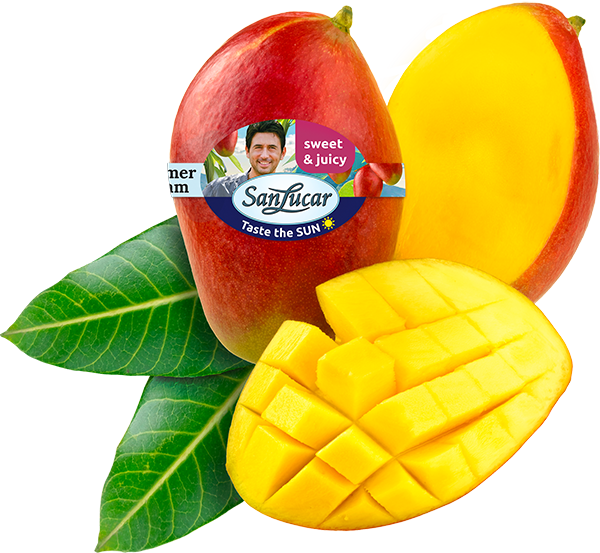We select only fibre-free varieties that have a high juice content and are particularly sweet.
Exceptional care when growing and harvesting.
- SanLucar Mangos are harvested only when the fruits are truly ripe. So we pick from the tree several times carefully with a pair of scissors, since not all the fruits of the tree ripen at the same time.
- When harvesting, we ensure that the fruits are picked with their stems. This prevents the sticky mango juice from escaping.
- A special quality feature of the SanLucar Mango is the dew-like film of the fruits. This indicates that the fruit has hardly been touched and treated after picking.
Availability and origin of SanLucar Mangos.
- SanLucar Mangos are grown from August to November in the southern part of Malaga, Spain. The growing area is dominated by a special microclimate where the fruits ripen under the best temperature and air conditions. We then harvest the fruits in Brazil and Peru.
- Due to high demand, we would like to offer these special mangos for 12 months a year. Therefore, we are currently planning new projects in Central and South America.
How do you know they have reached perfect ripeness?
- Mangos are climacteric fruits and ripen after harvest. If they rebound when applying a little pressure and have soft, very juicy and very sweet flesh, they are ripe.
- Mangos are tropical fruits and should therefore not be stored in the refrigerator but at room temperature.
Interesting fact about mangos.
- Mangos originally come from India, where they have been cultivated for over 6000 years. For a long time, the fruit was only known in Asia until it spread to Brazil in the 18th century and later in Europe.
- A mango has many valuable ingredients: carotene, vitamins, minerals, trace elements and enzymes. Therefore, the fruit provides, among other things, for more energy, good digestion, prevents stress and circulatory weakness, as well as premature skin aging.
- The mango is quite versatile in cooking. It tastes as delicious raw as it does processed: as a sauce for ice cream and cake varieties or as an accompaniment to meat dishes.
The last comment and 1 other comment(s) need to be approved.






Leave a Reply
Want to join the discussion?Feel free to contribute!